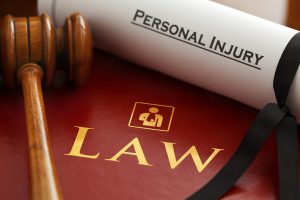 When you discuss medical malpractice, most people assume that you’re talking about suing a doctor. But what if you’re injured while in the hospital as a result of malpractice, but it’s not the doctor’s fault? Who is responsible? In many cases, the only remaining option is the hospital.
When you discuss medical malpractice, most people assume that you’re talking about suing a doctor. But what if you’re injured while in the hospital as a result of malpractice, but it’s not the doctor’s fault? Who is responsible? In many cases, the only remaining option is the hospital.
Physician vs. Hospital Negligence
Hospitals are corporate entities, and like any other corporation, they look for ways to limit their liability exposure. One way that they do this is by making it clear that most of the doctors at the hospital are not employees of the hospital – they have privileges to practice there but are not providing care on behalf of the hospital. As a result, the hospital cannot be held liable for the negligence of the doctor. Similarly, your doctor cannot be held responsible for the hospital’s negligence, either.
 Georgia Injury Lawyers Blog
Georgia Injury Lawyers Blog









 One of the things we try to do here at Slappey & Sadd is remember what it’s like to be in the client’s shoes. It’s a good way to remember that things that may seem routine or unremarkable are actually unknown territory and fairly intimidating for the people we represent. As a result, we thought we’d use today’s post to walk you through the process in the event that you’ve been seriously injured.
One of the things we try to do here at Slappey & Sadd is remember what it’s like to be in the client’s shoes. It’s a good way to remember that things that may seem routine or unremarkable are actually unknown territory and fairly intimidating for the people we represent. As a result, we thought we’d use today’s post to walk you through the process in the event that you’ve been seriously injured.  Social media is here to stay – most everyone uses either Facebook, Instagram, Twitter, or one of the other platforms, and many people use multiple forms on a daily basis. We use social media to stay in touch with friends and family, celebrate important milestones, and even share the seemingly insignificant but entertaining aspects of our day. We even use it to share our struggles and misfortunes when we need a sympathetic ear.
Social media is here to stay – most everyone uses either Facebook, Instagram, Twitter, or one of the other platforms, and many people use multiple forms on a daily basis. We use social media to stay in touch with friends and family, celebrate important milestones, and even share the seemingly insignificant but entertaining aspects of our day. We even use it to share our struggles and misfortunes when we need a sympathetic ear.  While most slip and fall accidents bruise nothing but our pride, some falls can result in serious injury. Property owners owe a duty to their guests and other visitors to ensure that their property is safe and free from hazards. In the event that the property owner negligently maintains his property causing someone to be injured, the property owner may be held liable for the victim’s medical expenses, pain and suffering, and other losses.
While most slip and fall accidents bruise nothing but our pride, some falls can result in serious injury. Property owners owe a duty to their guests and other visitors to ensure that their property is safe and free from hazards. In the event that the property owner negligently maintains his property causing someone to be injured, the property owner may be held liable for the victim’s medical expenses, pain and suffering, and other losses.  We’ve
We’ve